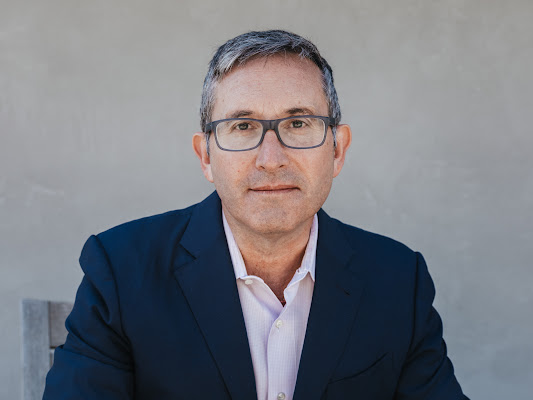Tom Hale gestures as he speaks, revealing an Apple Watch on one arm and an Oura Ring on the other. When I point out the combination, he takes a beat. “I think it varies based on the use case and why you come to Ring,” the executive answers. “One of my first questions of the company was, ‘how many of the Ring wearers have the Apple Watch?’ And the number was surprising high.”
Oura puts the figure at around 30% — or just under a third. It’s a surprising figure at first blush, running counter to the notion of the Oura Ring as solely a standalone activity tracker. That’s how I had initially contextualized the product, as something akin to a wrist-worn fitness device in a smaller, less intrusive form factor.
There’s often a stark contrast between the expectation and realities of user adoption. You really don’t know how the world is going to interact with your product until your product is out in the world. Oura is far from the first health-focused wearable — heck, it’s not even the first health-focused ring. It has, however, bucked expectation in a number of ways.
In an overcrowded market dominated by smartwatches (and, really, one specific brand), Oura managed to carve out its own niche. A little over a month ago, the firm announced that it had sold its one millionth ring. It’s an impressive figure for a relatively new product in an unproven form factor. Much of the company’s successes have come from leaning into health studies as well as partnerships with big-name sports leagues, from the NBA to NASCAR.
Forerunner’s Eurie Kim and Oura’s Harpreet Rai discuss betting on consumer hardware
Much of this impressive growth happened under the purview of Harpreet Singh Rai. A former Wall Street hedge manager, Singh Rai became a true believer in the product, citing his own weight loss journey. He became an investor and board member before stepping into the top spot in 2018. After a three-year run, he announced his exist via LinkedIn late last year.
Rattling off some key milestones for the company, Singh Rai added, “While all those accomplishments are great, I’ve come to realize that’s not the point. I remember talking to another CEO that I admire – and he once described the point of any company is really to endure, and by that, for an idea to live in the world forever, beyond anyone of us.”

COO Michael Chapp stepped into the interim role before Hale was announced earlier this week. The new CEO brings experience from a wide range of roles at companies, including Adobe, HomeAway, Momentive AI and Second Life producer, Linden Labs. As Oura pushes more deeply into data collection and app-based actionable insights, software has increasingly become a focus for the firm. But at its heart, it’s still a hardware company — something that has, thus far, been absent from his resume.
“Hardware is hard, and it also requires discipline,” says Hale. “It requires a rigor, which is powerful, particularly if you’re trying to do something difficult. The ambition of this company is broad, big and bold. We’re trying to put people in charge of their health and give them data and insights to make better choices — and maybe their healthcare over time. That’s a huge mission. Hardware is an enabler of that and software is the key. Data science is the key. Personalization is the key. That’s the opportunity that a person like me who comes from a software background can bring.”
The company’s evolution has not come without growing pains. In particular, a shift toward a subscription service rubbed some of Oura’s fanbase the wrong way. The company has promised deeper insights by way of its app, while moving some existing offerings behind a paywall — effectively asking users to pay a monthly fee for some of the data that had previously been included as part of the hardware’s upfront $300 cost. Hale says it was an issue he focused on after being asked to join the company.

“There is a clear value of ongoing continuous data and continuous investment,” he says. “In order to continue doing that and supporting the science that underlies it and expanding it to new adjacencies outside of sleep, I think there’s a cause for a subscription business model. Unfortunately, most people who buy wearables pay the price and want the things it does now. I think that was a miscalculation on the part of the company. The only thing I think we can do to make it different and better is to deliver the things we said we would have be a part of the gen-three lifecycle.”
Hale points to exempting earlier Oura Ring adopters, as well as the warning the company gave users ahead of the third-generation ring launch. He also notes that moving to a lower upfront cost and a hardware-as-a-service approach are models that are likely in the company’s future. He cites reports around Apple and Peloton’s explorations in the space as evidence of HaaS becoming more accepted by the mainstream.
An IPO could certainly be in Oura’s future, as well, under Hale’s watch. Though he cautions that such a move is probably still a ways away.
“The markets have been pretty choppy of late, and I think I’ve got some work to do to get there. I don’t think we’re building this company to IPO. We’re not building this company to IPO, we’re building this company to make an impact on the world of health and put preventative medicine into the hands of people who can improve their lives with it.”































Comment